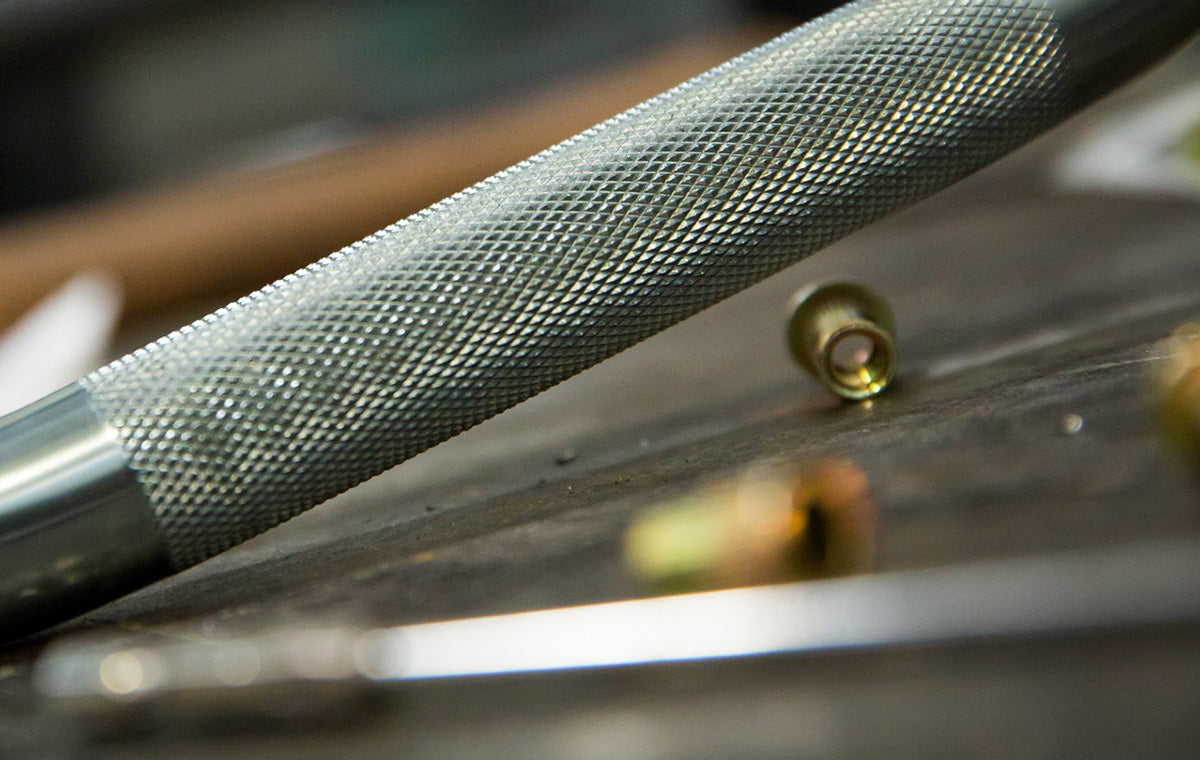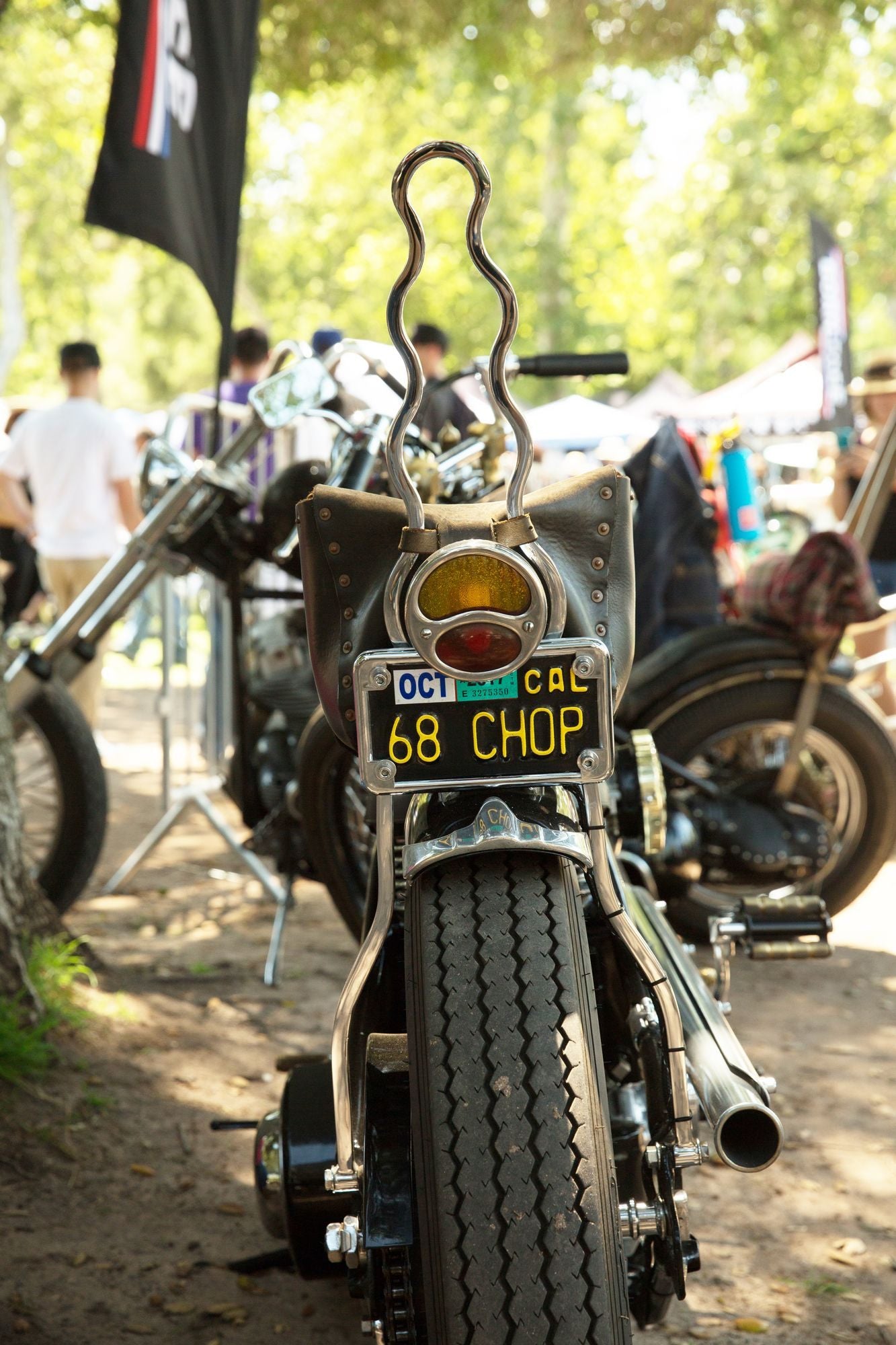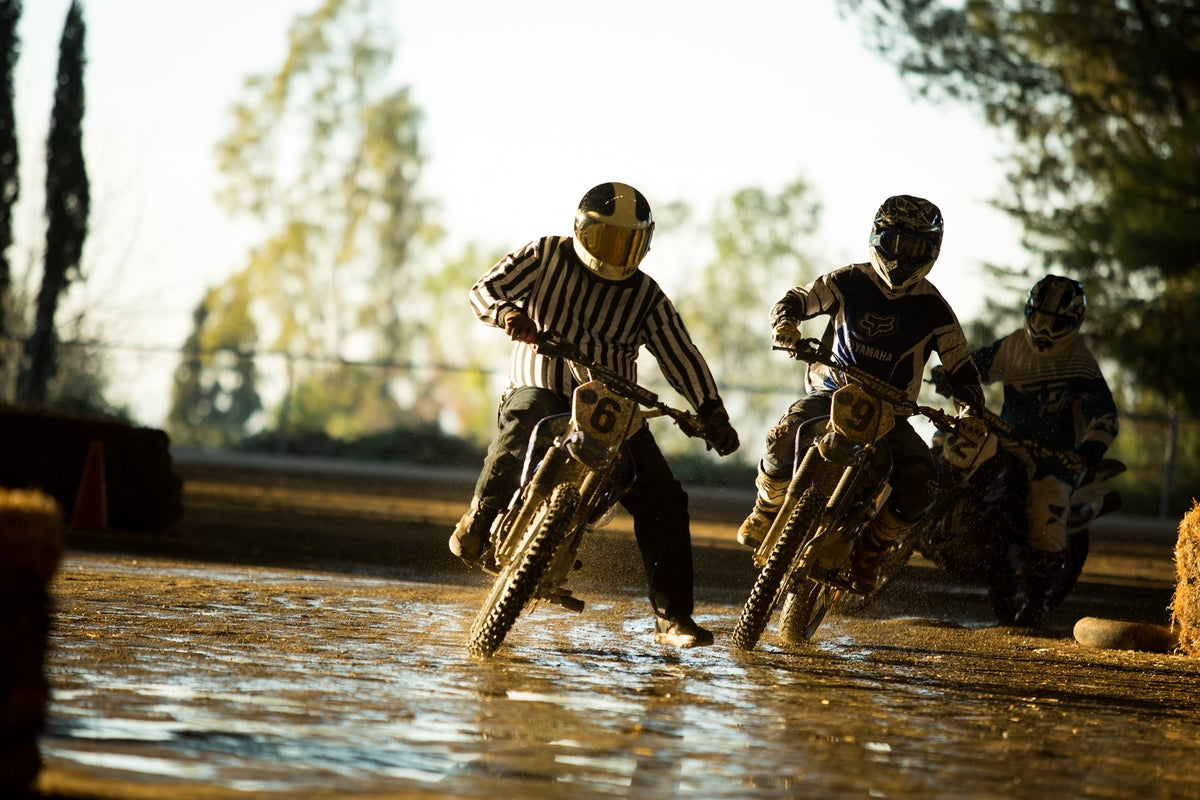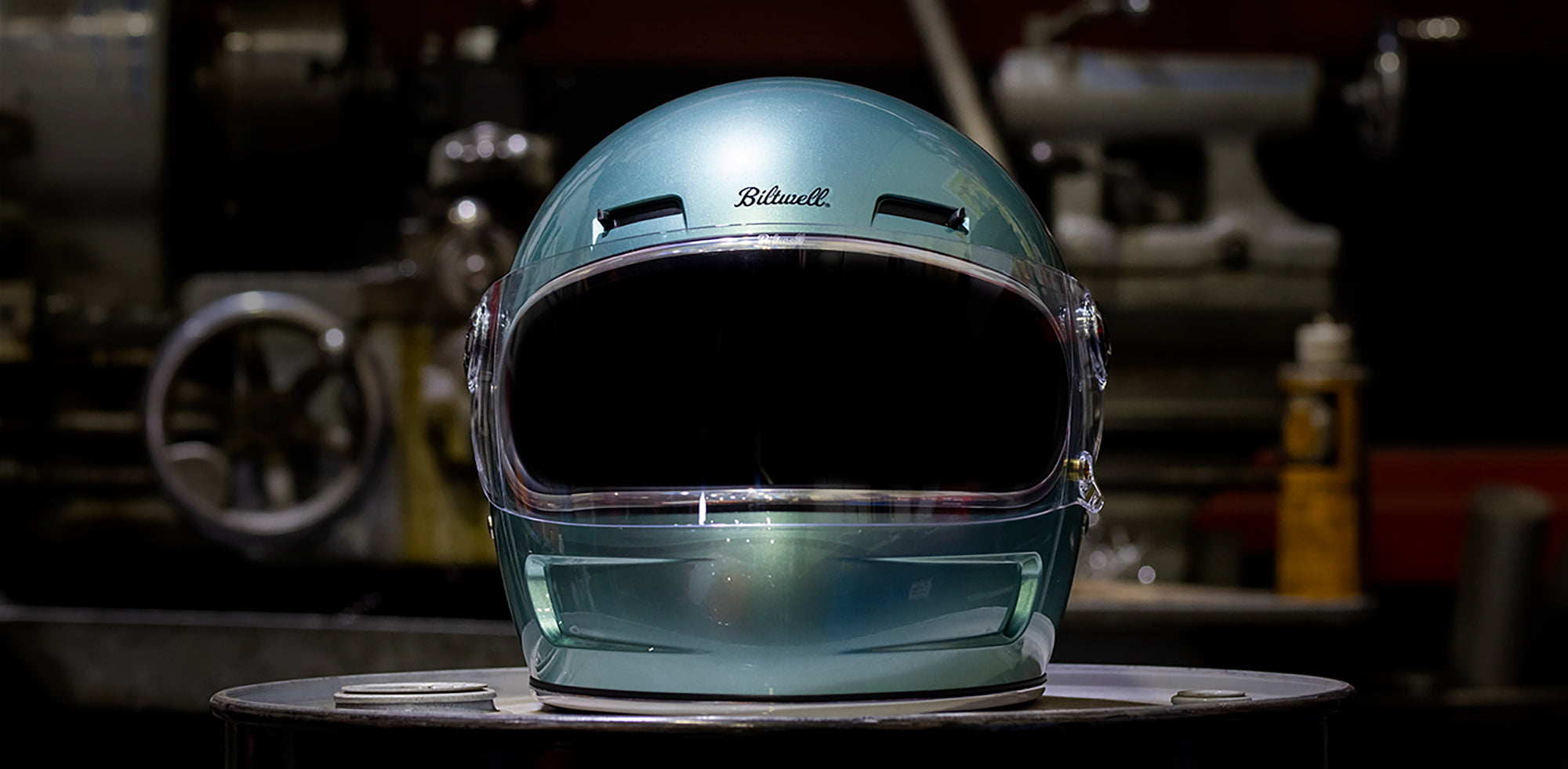 Don't let the file-like surface serrations on knurled handlebars lull you into a false sense of security. Truth is, there's a science behind why smooth, non-knurled handlebars clamp tighter in steel risers, and this story explains why.
Don't let the file-like surface serrations on knurled handlebars lull you into a false sense of security. Truth is, there's a science behind why smooth, non-knurled handlebars clamp tighter in steel risers, and this story explains why.HOW KNURLING IS APPLIED
After cutting a section of raw handlebar tubing to the appropriate length for a specific bar design, this tube section is clamped into a lathe. Once he has identified the center of the tube section, the machinist uses a knurling bit mounted on the lathe's tool post to engrave a crosshatched pattern into the surface of the tube. Depending on the tool design, this pattern can look like the surface of a metal file, or simply as straight lines cut into the surface. Most knurled handlebars feature two strips of knurling spaced 3.5–4 inches apart in the middle of the bar clamp area.
KNURLING PROS AND CONS
Knurling can and does reduce handlebar slippage inside the risers, but only reliably in the following conditions:
- Knurled STEEL bars in ALUMINUM risers
- Knurled ALUMINUM bars in ALUMINUM risers
We emphasize ALUMINUM risers because this material is soft enough to let the sharp teeth of the knurled surface bite into the clamp material. Riser clamps constructed with steel (all Biltwell risers, for instance) are too hard to allow the knurling to bite into the clamping surface. As the accompanying illustration shows, knurling REDUCES the surface area between the handlebars and the riser, significantly reducing the riser's ability to clamp the bars tightly.
 Maximum contact area inside the risers is crucial to ensure reliable clamping power around the handlebars. Knurling (left) reduces clamping surface area by creating peaks and valleys on the surface of the handlebar. Smooth handlebar tubing (right) provides full contact inside the risers to maximize both the surface area and clamping power of the riser.
Maximum contact area inside the risers is crucial to ensure reliable clamping power around the handlebars. Knurling (left) reduces clamping surface area by creating peaks and valleys on the surface of the handlebar. Smooth handlebar tubing (right) provides full contact inside the risers to maximize both the surface area and clamping power of the riser.STEEL IS REAL
As everyone who owns a set can tell you, Biltwell riser clamps are made of investment-cast stainless steel (Slimline and Thunder risers) or high-tensile steel (Murdock and Gordo risers.) We favor steel over most commonly used 6061 T6 aluminum to build handlebar risers, for the following reasons:- Approximately 1.5x higher ultimate tensile strength
- Approximately 0.5x greater sheer strength
- Approximately 4x greater density
 Shop All Helmets
Shop All Helmets Shop All Optics
Shop All Optics Shop All Accessories
Shop All Accessories Shop All Gloves
Shop All Gloves Shop All Luggage
Shop All Luggage Shop All Apparel
Shop All Apparel Shop All Etc.
Shop All Etc. Outlet
Outlet WTF Blog
WTF Blog





